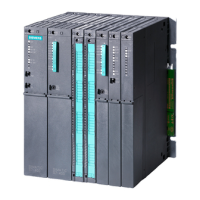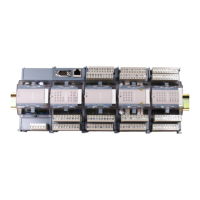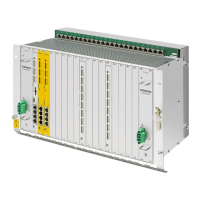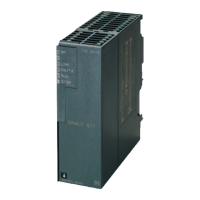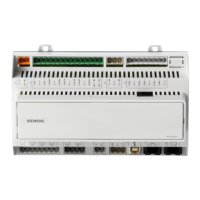Communications configuring
3-292 System- and communication configuring D7-SYS - SIMADYN D
Edition 12.2003
3.27 Communications with SIMATIC Operator Panels
A configuring engineer will be shown how to implement a coupling from
SIMADYN D to a SIMATIC OP7 using this configuring software example.
NOTE
Proceed in a similar fashion when configuring couplings to the OP27,
OP37 SIMATIC Operator Panels and the TP37 SIMATIC Touch Panel.
The example described here, includes all of the available SIMADYN
function blocks, and shows how they are essentially used. The functional
scope of the configuring software example has been consciously kept
extremely low, so that you can quickly get to grips with the subject. It is
simply possible to expand the functionality and/or the hardware
components. However, the information provided in the applicable function
block documentation must be observed.
The designations used for data blocks, flags, variables etc. have been
randomly selected, and are only binding for this particular configuration
software example.
NOTE
• When saving values which have been changed using SIMATIC Ops,
this is realized on the SIMADYN D CPU in the SAVE area.
• When the battery back-up fails, the configured value at the input is
used as default.
The structure of these configuring instructions represents the sequence
of the various operating steps, with which the complete configuring
software can be generated. However, it should only be considered as a
recommendation, and is not mandatory.
We are assuming that you know how to handle the SIMATIC Manager
(including HWConfig and CFC), configuring SIMADYN D as well as
configuring OP7 with ProTool/Lite.
Literature which is available on these subjects:
• SIMADYN D User Manuals
• SIMATIC Equipment Manual OP7/17
• SIMATIC HMI, User Manual
ProTool/Lite configuring software
3.27.1 Configuring example
The configuring software example supports the following OP7 functions:
• Reading and writing variables
• Output of operating messages
Introduction
Prerequisites
Functional scope

